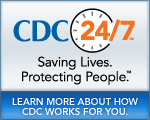MMWR
Morbidity and Mortality Weekly Report
Synopsis for July 24, 2008
- Non-Pharmaceutical Fentanyl-Related Deaths a€“ Multiple States, April 2005-March 2007
- Use of Mass Tdap Vaccination to Control an Outbreak of Pertussis in a High School a€“ Cook Count, Illinois, September 2006-January 2007
- Lymphocytic Choriomeningitis Virus Transmitted Through Solid Organ Transplantation a€“ Massachusetts, 2008
- West Nile Virus Update a€“ United States, January 1-July 14, 2008
There is no MMWR telebriefing scheduled for:
July 24, 2008
Non-Pharmaceutical Fentanyl-Related Deaths a€“ Multiple States, April 2005-March 2007
PRESS CONTACT: Division of Media Relations
(404) 639-3286
Drug overdoses kill thousands of people every year in the United States. Drug overdose deaths are a large and increasing public health and law enforcement problem. Improved epidemiologic data are needed to guide a coordinated public health and law enforcement response to prevent these deaths. This report describes an epidemic of more than 1,000 drug overdose deaths, caused by illicitly manufactured non-pharmaceutical fentanyl (NPF), occurring in less than two years. The NPF-related epidemic heavily affected the Chicago, Detroit, and Philadelphia metropolitan areas. Close collaboration among public health and law enforcement agencies contributed to saving lives and ending the epidemic. The overall problem of drug overdose deaths has recently increased substantially with drug poisoning deaths (primarily drug overdoses) doubling between 1999 (11,155 deaths) and 2005 (22,448 deaths). Increased public health efforts are needed to improve epidemiologic data on drug overdoses, to enable early detection of increases in drug overdoses, and to educate drug users and others regarding the risks for and how to respond to overdoses.
Use of Mass Tdap Vaccination to Control an Outbreak of Pertussis in a High School a€“ Cook Count, Illinois, September 2006-January 2007
CONTACT: Catherine A. Counard, Assistant Medical Director
Communicable Disease Control
(708) 492-2092
Whooping cough (pertussis) is still a common disease in the United States, because immunity wanes after childhood vaccination. Routine vaccination of adults and adolescents with the new pertussis booster vaccine (Tdap) is an important measure to control the transmission of pertussis. Because whooping cough (Bordetella pertussis) immunity from childhood vaccinations wanes over time, outbreaks of pertussis periodically occur among students and staff at middle and high schools. School settings facilitate transmission of B. pertussis, disrupting school activities, and putting vulnerable populations, such as infants, at risk of infection with potentially serious health consequences. A pertussis booster vaccine for adolescents and adults (Tdap) became available in the United States in 2005. This report summarizes strategies used to control a high school pertussis outbreak in Cook County, Illinois, including a cough illness exclusion policy and an onsite Tdap vaccination clinic. Although school-based clinics can quickly vaccinate large numbers of people, the key to preventing pertussis outbreaks is ensuring that adults and adolescents receive routine Tdap vaccination before outbreaks occur.
Lymphocytic Choriomeningitis Virus Transmitted Through Solid Organ Transplantation a€“ Massachusetts, 2008
PRESS CONTACT: Division of Media Relations
(404) 639-3286
LCMV (lymphocytic choriomeningitis virus) is one of a number of unusual pathogens that can be transmitted through organ transplantation. Clinicians should be aware that unusual illness or death in a transplant recipient may be due to an infection transmitted from the donor, and should rapidly alert their organ procurement organization (OPO) and public health authorities when this is suspected. Two kidney transplant recipients were infected with LCMV transmitted through organ transplantation. The organ donor had a history of significant rodent exposure, and died after being hospitalized with encephalitis. The recipients became ill approximately two weeks after kidney transplantation; both developed fever, hepatitis, and shock, with ensuing multisystem organ failure and death. Blood samples from the donor and recipients were sent to CDC and all had evidence of LCMV infection. LCMV is carried by rodents; the primary reservoir is the house mouse; other wild, laboratory and pet rodents (eg. rats, guinea pigs, hamsters) can also become infected. Humans can become infected through exposure to rodents, organ transplantation, and maternal-fetal transmission. LCMV infection in humans usually causes a self-limited meningitis, an inflammation of the lining surrounding the brain and spinal cord that resolves on its own and does not result in major complications, but organ transplant recipients can develop severe disease or death.
West Nile Virus Update a€“ United States, January 1-July 14, 2008
PRESS CONTACT: Division of Media Relations
(404) 639-3286
No summary available
####
- Historical Document: July 24, 2008
- Content source: Office of Enterprise Communication
- Notice: Links to non-governmental sites do not necessarily represent the views of the CDC.
View Press Releases in
Get e-mail updates
To receive e-mail updates about this page, enter your
e-mail address:
Contact Us:
- Centers for Disease Control and Prevention
1600 Clifton Rd
Atlanta, GA 30333 - 800-CDC-INFO
(800-232-4636)
TTY: (888) 232-6348 - Contact CDC-INFO


